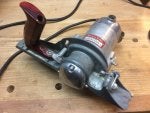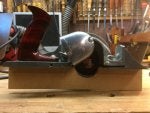I am in the process of milling some 1" rough cut pine boards to be used as the interior walls of my garage workshop. My current plan is to yield as much width as each board will allow and have boards of varying widths - some as wide as 8"+. i originally intended to go with board and batten, but am now considering tongue and groove because I think the varying widths will look better as t&g. And it should help ensure the wider boards stay flat.
I had planned to mill the t&g on the table saw with a dado stack and add a "v" (or maybe a bead) to the profile with a router. I already own the required equipment, blades and bits to complete the milling this way.
I am looking for suggestions of alternative methods that will reduce the number of passes required and / or simplify the milling process. I briefly considered a t&g router bit set, but don't want to spend $100+ and I'm not sure if it would save a great deal of time over my current plan.
Thanks in advance for your thoughts.
Edit: much of the lumber has been thicknessed to 3/4"
I had planned to mill the t&g on the table saw with a dado stack and add a "v" (or maybe a bead) to the profile with a router. I already own the required equipment, blades and bits to complete the milling this way.
I am looking for suggestions of alternative methods that will reduce the number of passes required and / or simplify the milling process. I briefly considered a t&g router bit set, but don't want to spend $100+ and I'm not sure if it would save a great deal of time over my current plan.
Thanks in advance for your thoughts.
Edit: much of the lumber has been thicknessed to 3/4"








